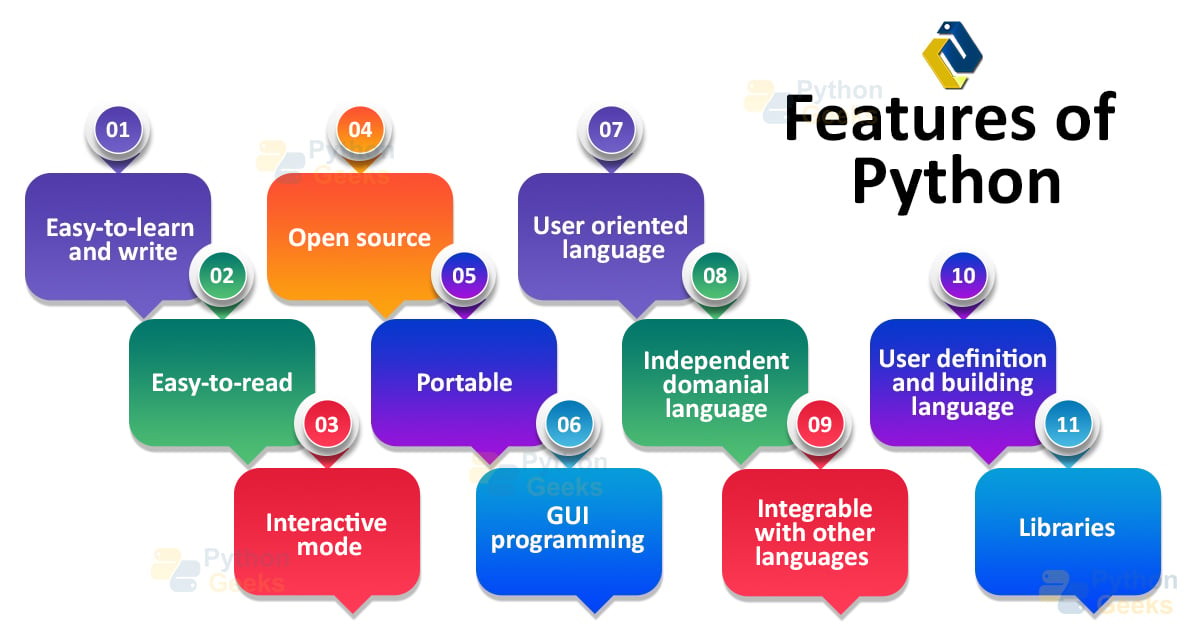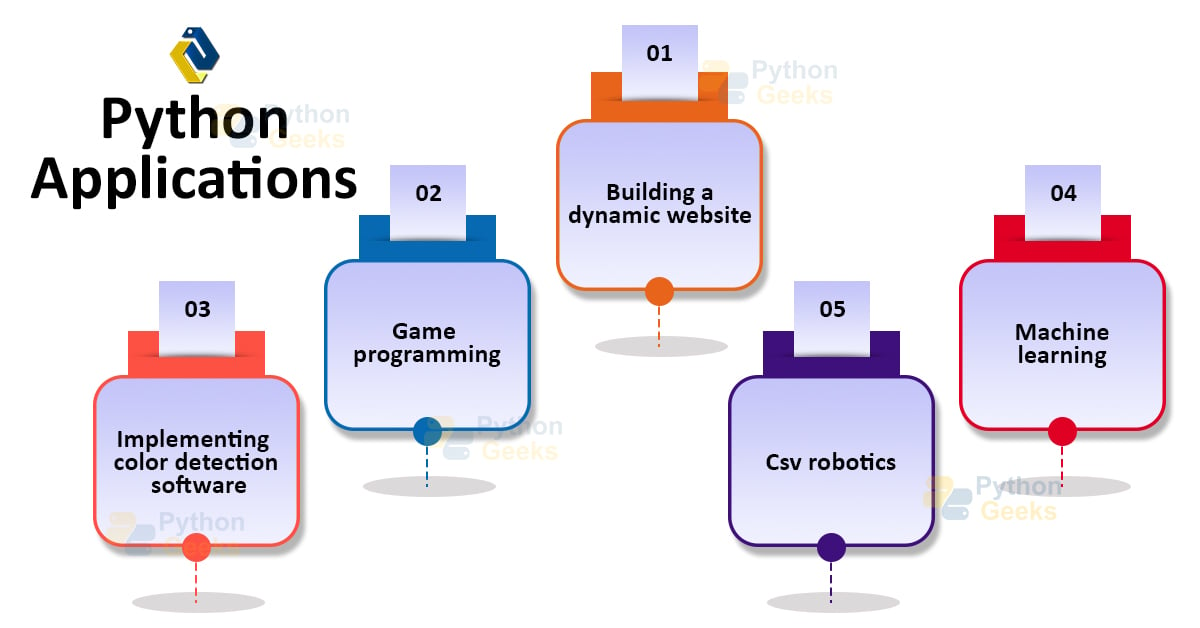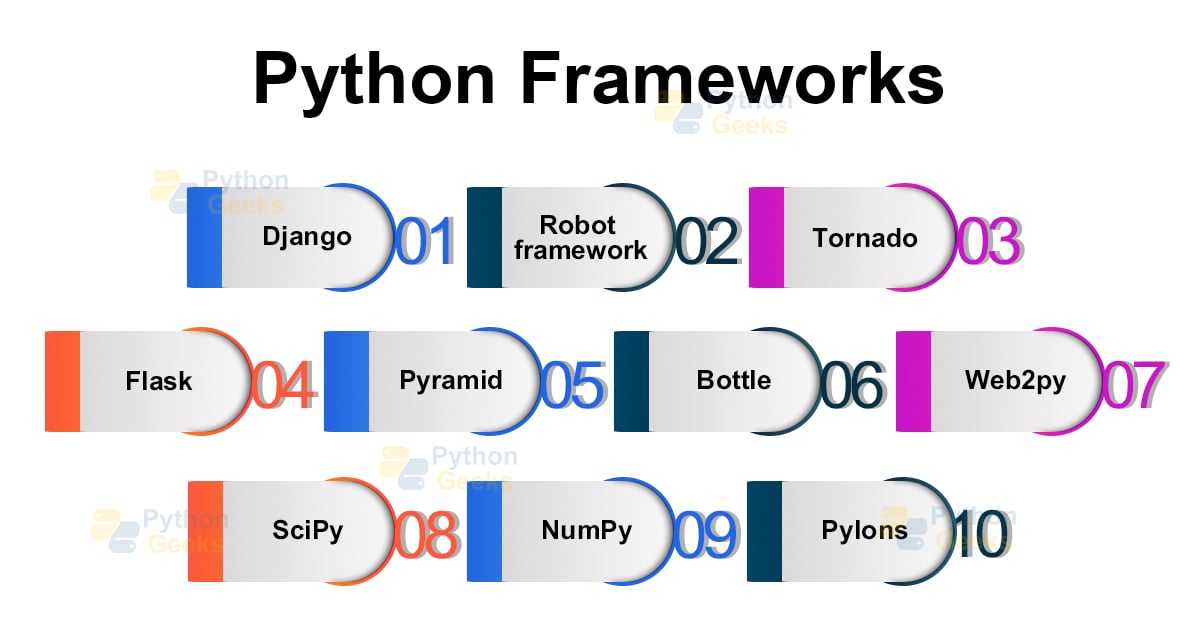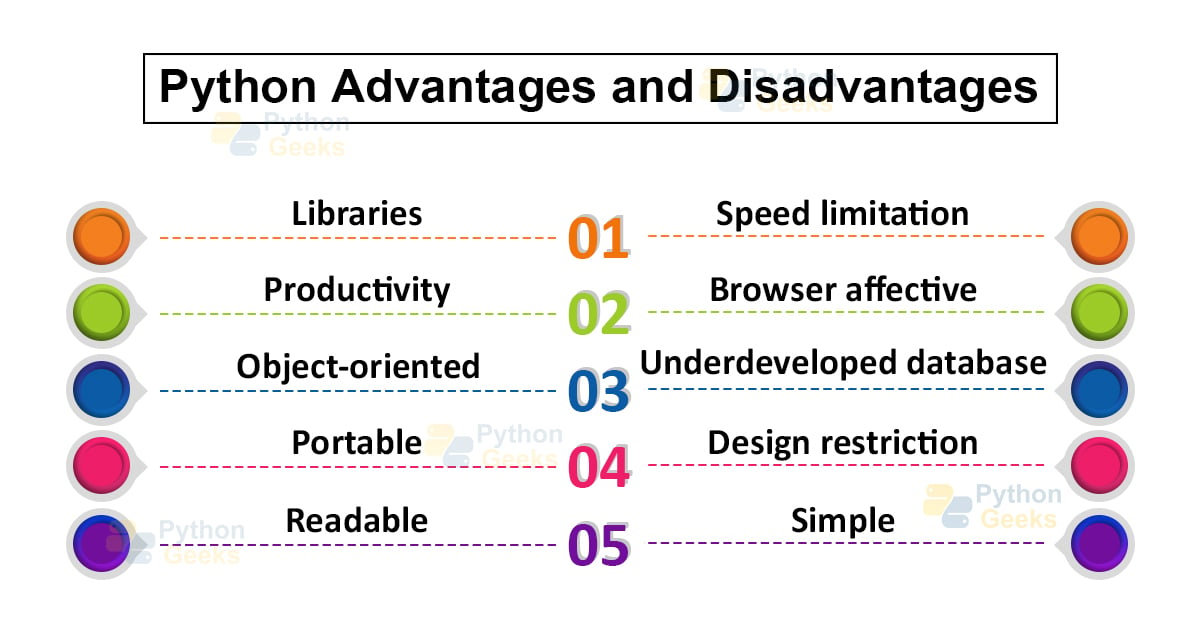Learn Python | Python Introduction for Beginners
Python is easy to learn and simple to go programming language. It has high-level data structures and a simple approach to user-oriented programming in run time. Python’s elegant syntax, dynamic typing for codes, user-oriented codes for scripting, and application development give the coder a push to create and execute new ideas.
In this Python Introduction tutorial, we will have a glimpse of what python is, where did this idea of a language such as python emerge from, various features and applications of python. And slowly, we will also proceed to the practical usage of python, its web developing scenarios, and a tiny glimpse of python tools and internal working. So let’s start.
History of Python
Python first appeared in 1990. It’s name is originated from Monty Python’s Flying Circus, a British sketch comedy from 1969. It is developed by more than 300 people who were searching for an execution language in the code.
It has made a great way in the field of coding and is well known for its outstanding and easy interpretation and understanding.
PYTHON: A Language
Python interpreter is freely available in source in a binary form almost for all major platforms. It is easy with data types in the run time as well.
Python is another very suitable extension language for customizable applications in runtime.
Why Learn Python?
1. Python is Interpreted
Python is processed at runtime by the interpreter for any user-defined function and code as well. The coder does not need to compile your program before executing it.
2. Python is a user Interactive language
The coder can actually converse with the interpreter in the form of tools and signs. Python is a mathematical related language, which is highly understandable by the one good in mathematics.
3. Python is Object-Oriented
This means that not only code, but python is dynamic as well. It supports the object orientation, i.e., the representation of the code. For building a website, python plays an important role as it identifies the objects parsed easily.
Python Architecture
This is the basic frame of the python sheet where each code gets executed internally. It has 3 basic components which are:
1. Parser
This is a mutability chance in python, where the main code can be changed/manipulated according to the coder. It acts as a utility server, which allows the code to hold the information.
2. Compiler
As in every other language, a compiler checks all the statements as a whole and hence displays the output. It acts as a massive runway, which reads the whole code in one go only.
3. Interpreter
It checks the statement one by one and displays an error if struck in between any two lines of the code. An interpreter works as a small line-by-line communicating device of the code. It is well sorted with any tools applied to it.
Features of Python

The various features which make python unique and user friendly are:
1. Easy-to-learn and write
Python has keywords, functions, libraries and simple structure, which are understandable for any new coder.
2. Easy-to-read
Python code is very self-explanatory, and also has comments for the same in runtime.
3. Interactive Mode
Python has a working module called shell and cern, which are highly interable for any coder.
4. Open source
Python is highly cost-effective. One does not need to buy any subscription or scripting cost.
5. Portable
Python can run on any platform which supports the idle format
6. GUI Programming
Python supports GUI applications means graphic user interface, which are highly dynamic for any structural code.
7. User-oriented language
Python is a user-oriented language, this means the code which is written in python is highly logical and hence easily comprehensible for any user.
8. Independent Domanial language
Python is a must recommended programming language for any data analyst, gamer, and computational programmer.
9. Integrable with other languages
It can be easily integrated and compiled with C, C++, COM, and Java.
10. User definition and building language
It is used as a scripting language or can be compiled to the byte-code for building software applications. And it also supports the working of the functional and structured programming methods as well as OOP.
11. Huge number of Libraries
Python has a very crucial feature of libraries, which has default codes, syntaxes, packages, modules as well as relational functioning bugs. These help the new coders to understand and write the code in a better way.
Applications of Python

Python is a very resourceful language that works for not only a coder but also the user in various domains. For example
1. Building a Dynamic Website
This is a very important application, as the new coder gets a chance to connect the logic with the web and hence displays the same in a coded and dynamic platform.
2. Game Programming
Especially the logic ones: python is always the best platform for gaming, be it the snake and ladder or be it other highly interactive games. The inbuilt functions and libraries give coders numerous chances to develop their own games.
3. Implementing Color Detection Software
Python, if linked with the web can also put a check on the web programs and functions. This not only helps to maintain your site with the best content but the automated time requirements are also helped.
4. Machine Learning
Python can be easily coded for flying bots and machines as well. It knows the easy maths to make work practical objects such as machines.
5. CSV Robotics
This is widely used now, a mathematical coded language is highly efficient to understand physics and dynamic robot-related objects. Python is a highly manipulated language for robots.
Some other Applications of Python are:
- Web Scraping
- Data Analysis of bulk files
- Automating a web browser
- Perform Scripting and series
- Perform Scientific Computing and calculations
- Build Artificial Intelligence
Python Constructs
These are the basic python tools that help in developing any web-based application or simply a calculative code. These constructs are the building blocks of the language and also provide a user coder interface to code. They are:
1. Functions
These are the predefined pythonic statements that help the coder reduce the logic of the code by their direct implementation. For example, a function def_ gives a staticity to any code, but the same thing is done by a logical code as well. A function is a helper in a python code.
2. Classes and Objects
They are special types of defined variables that are common to use for general codes, thus saving time with their direct implementation in the code.
3. Modules and Packages
They are the collection of parsed functions together in one place. They are extracted when they’re called out by the coder. However, they are imported before direct functioning in any code.
4. Data Structures
These are basic blocks of data representation in python code. They help the user to represent the data in an arbitrary format.
5. Comments
Python comments play a very crucial role for any user. They are the only part of the code which does not execute, but describes the meaning or the logic of the coder.
Implementation of Python
Python is not only the idle form but it is also operated in the c language, java and many more, with different functionalities.
1. CPython
This is the most vividly accepted form of the code, it uses C language as well. CPython is a user-friendly interface for any code in the runtime. But it avoids the debugging of the main code by any functionality.
2. Jython
This is java and uses the importing of CSV and binary files. This also needs a good command of java and scripting languages. It does not allow the user to code any mathematical function without importing it prior in the code.
3. IronPython
It is coded by using c# and it can decrypt in any language other than python. This is generally used as a gaming software in the main source code, it allows the hashable objects to encrypt within the run time.
4. Brython
A web version of python which uses a browser to operate. It allows the importing from the web, not only the designs and source copies of the codes but the marginal functions as well. It uses dynamic programming to generate main codes.
5. RubyPython
When a ruby and a python interpreter collaborate in one compiler, the new transformation is static as well as dynamic in nature. This plays a major role in quantum computing, and general mechanics also. Heavy models like that of generators and bots can also be easily checked by this language.
6. PyPy
When a subcode in a python file complies with the main code in the source file, it returns the value of the code in binary digits only. But the pypy is not in much use nowadays and is good for small programming codes only.
7. MicroPython
It’s highly effective on microcontrollers as well as the subparts of the code. MicrePython can generate one-time answers. It allows the user to run the specific time codes on a small platform that is supported by no other language. It also generates profitable results from the same.
Running Python
Python operates on a computer through an in-built interpreter (IDLE), it is most advisable to code here. The other extensions on which python can be used are:
- py – Python file
- pyc – Compiled bytecode
- pyd – Windows DLL file
- pyo – File created with optimizations
- pyw – Script for Windows
- pyz – Script archive
Python Frameworks

These are some frame categorization on which the actual python code depends. Some of them are:
1. Django
It is made to follow the DRY(Don’t Repeat Yourself) principle which means that once you enter the information there is no coming back. It works as an operating generator in the main source code.
2. Robot Framework
It is an open-source for testing automobile development and automation. It provides a graphical interface to interact with the code.
3. Tornado
It is a nonblocking syntax, which allows the debugging and development of the tools. It is highly compatible and memory-efficient also.
4. Flask
It is a web framework, which connects python with the web server, and thus introducing a dynamic implementation in the code. It generally works on the windows and the os system but has customized software as well.
5. Pyramid
It is a mega framework that connects the web with python and implements both dynamic as well as static codes in the language.
6. Bottle
It is similar to flask which can run on the user interface codes. It is supported by all the versions of python and is highly scalable and easy to comprehend.
7. Web2py
It is an open-source web developing agent, which is connected with multiple coded bots for a good architecture of the code.
8. SciPy
It is a library, generally useful in scientific computing and heavy calculations. It does not allow the user to generate any friendly bugs in the code so that it can work efficiently.
9. NumPy
It supports multidimensional languages, complex mathematics equalities, and coordinative matrix equations as well. It uses mathematical and related domains.
10. Pylons
It was a much early used framework, which had basic calculative performances, but due to less efficiency it is no longer recommended. However, it is still in use for basic generational computer programs.
Advantages and Disadvantages of Python
Advantages of Python

1. Libraries
Python provides the inbuilt libraries, which are highly extensive and user-defined. From default codes to functions, and modules to packages they have a sample of a built-in code, which helps the new user to create his own code.
2. Productivity
Python is considered the most productive language, as it does not need any pre-learning of any syntax or codes. The simplicity of the language is in pure maths and logic, with the help of which the user can write the code anytime without prior learning.
3. Object-oriented
Python allows the user to use the objects in defining the code well. It also simplifies the logistics by the pre-defined object-oriented schema in the code. The language is thus very dynamic in nature.
4. Portable
Python is a highly portable language in any device which supports the idle format. From mobile phones to laptops to any other device, python is in the form of a source code or plain sheet as well.
5. Readable
Python is a highly understandable and readable language for any new coder. Because of the comment feature in python which enables the user to read and understand the code, Python is considered the easiest language.
Disadvantages of Python
1. Speed Limitation
While comparing with any other language, python processors are slow for untimely one-line coded comments. This is because of the built-in functions which are already there in python.
2. Browser Affective
Though python can work on a mobile phone also, but the cascading style sheet is tiring as well as boring to use there. Moreover, the functions get short in the mobile versions which do not help the new coders with logical codes.
3. Underdeveloped Database
Python has less variety of internal databases and CSV files as compared to any other language such as java , c+ etc.
4. Design Restriction
Python does not support heavy and statically dynamic fonts and animations unless installed in the code. This is because python is given less space of memory for retaining its dynamicity.
5. Simple
The very simple code of python can lead the coder not to think more logically as well as understand and work with the other languages as well. A python coder finds it very hard to learn java and c++.
Conclusion
Python is so much fun in learning. In this tutorial, you just got a tiny glimpse of what python is, how does it work, and what makes python different from the other programming languages. There is still so much to share with you all regarding python.
Hi
very short and insightful
Love this !!